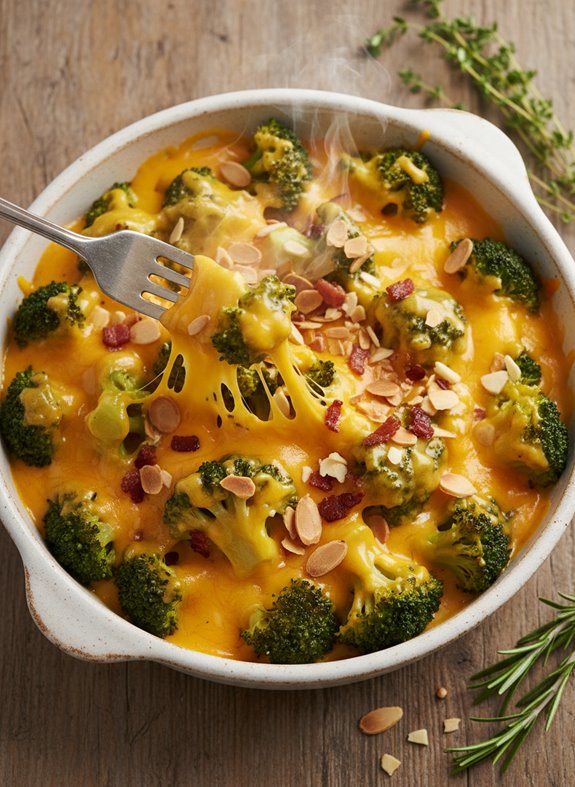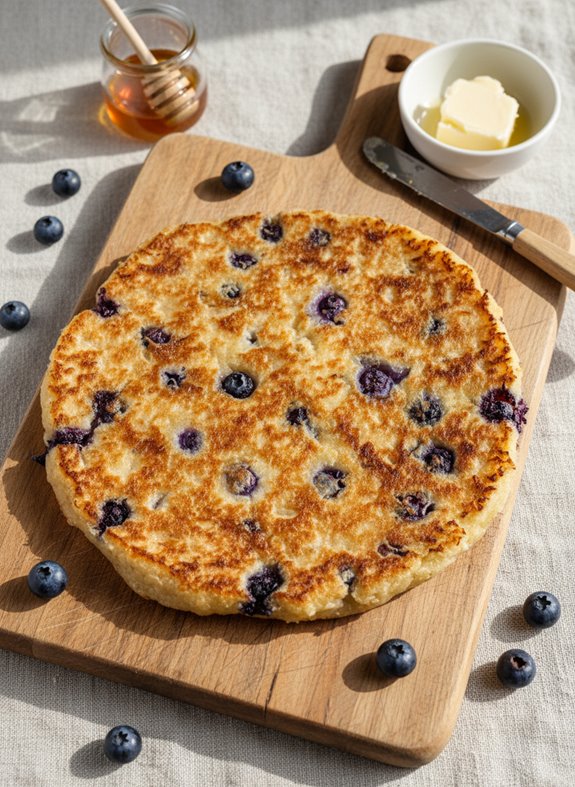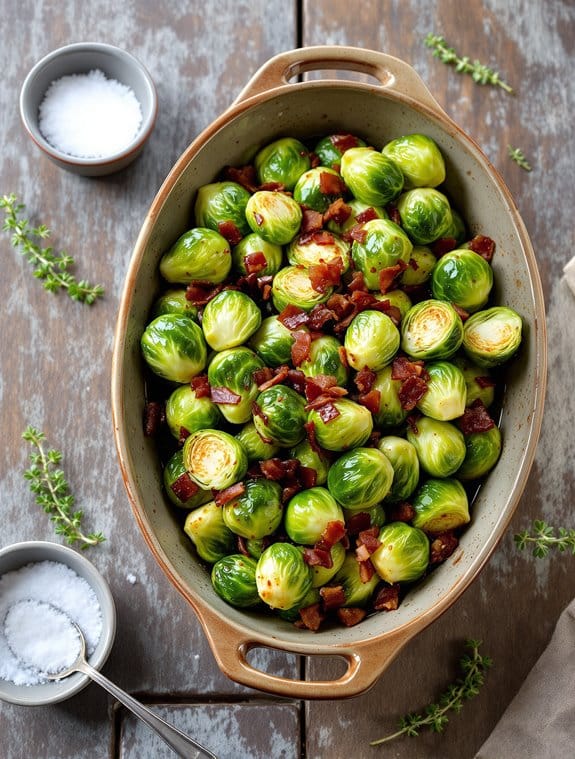Why You’ll Love this Rustic Ratatouille
This rustic ratatouille recipe might just become your new favorite way to use up summer vegetables.
I’m absolutely smitten with how the eggplant, zucchini, and peppers meld together in a tomato-kissed symphony that’s both humble and sophisticated.
What makes it irresistible? The flexibility, for one. Got extra garden bounty? In it goes.
Plus, it tastes even better the next day when all those Mediterranean flavors have had time to get friendly with each other.
Serve it hot alongside grilled chicken, or chilled for lunch with crusty bread.
Trust me, your taste buds will thank you for this colorful French countryside classic.
What Ingredients are in Rustic Ratatouille?
The beauty of ratatouille lies in its simplicity—a handful of fresh vegetables transformed into something truly magical through gentle cooking. This rustic version stays true to traditional French countryside cooking, where seasonal produce shines without fussy techniques or complicated ingredients. Each component brings its own personality to the dish, creating a harmonious medley that’s greater than the sum of its parts.
- 1 large eggplant, cut into 1-inch pieces
- 3 medium zucchini, cut into 1-inch pieces
- 2 large green peppers, cut into 1-inch pieces
- 1 cup chopped onion
- 2 teaspoons finely minced garlic
- 2 cups crushed canned tomatoes
- 1 teaspoon dried oregano
- 1 tablespoon fresh basil (or 2 teaspoons dried basil)
- 2 teaspoons chopped parsley
- Olive oil for sautéing
- Fresh ground pepper to taste
While the recipe doesn’t specify salt, I’d recommend adding some to taste—vegetables really come alive with proper seasoning. Feel free to play with the proportions based on what looks good at the market or what’s abundant in your garden. Some cooks might add a splash of balsamic vinegar for depth or a pinch of red pepper flakes for heat. The most important thing? Quality matters. Since there are so few ingredients, try to find the ripest, most flavorful vegetables you can get your hands on. They’ll make all the difference in your final dish.
How to Make this Rustic Ratatouille
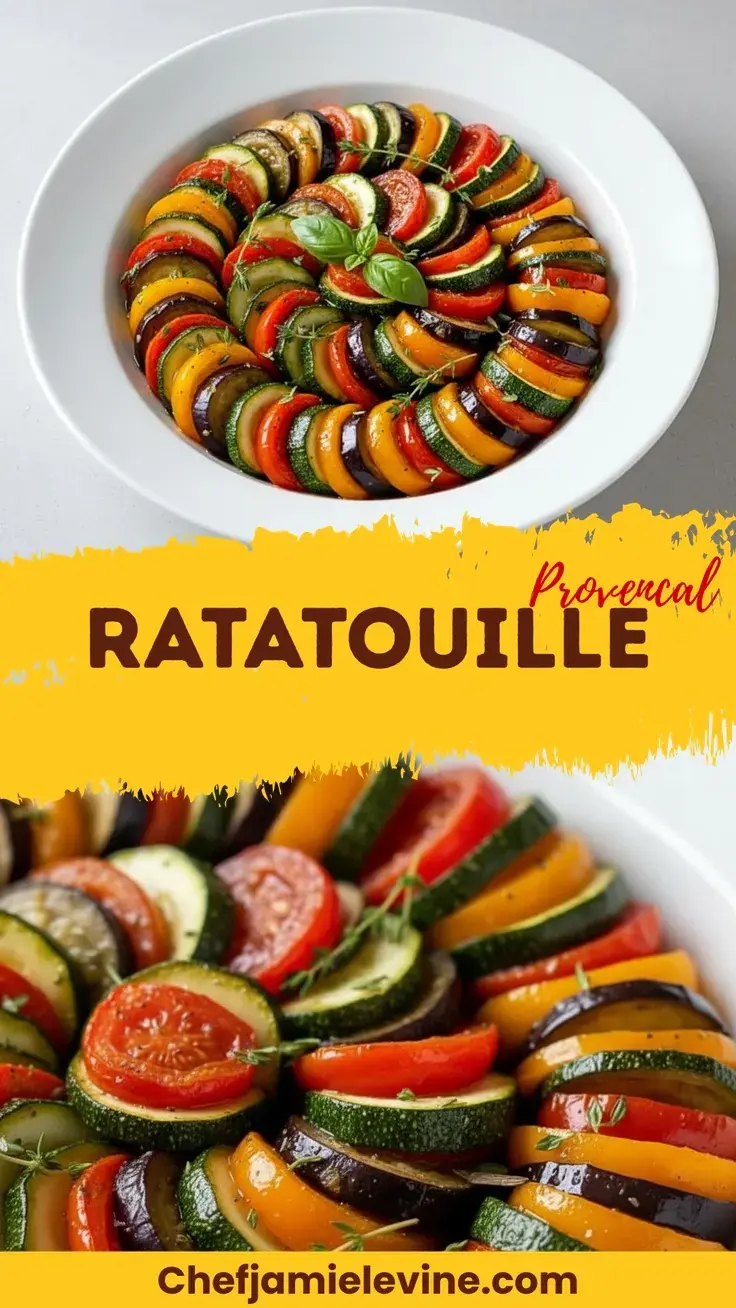
Making ratatouille is less about precision and more about process—letting those gorgeous vegetables mingle and get to know each other.
Start by heating a generous glug of olive oil in a Dutch oven or large saucepan over medium heat. Add 2 teaspoons of finely minced garlic and 1 cup of chopped onion, cooking them until they’re tender and fragrant, about 3-5 minutes. This aromatic foundation sets the stage for everything that follows, so don’t rush this step. The onions should be translucent but not browned.
Now comes the colorful parade of vegetables—your 1 large eggplant, 3 medium zucchini, and 2 large green peppers, all cut into hearty 1-inch pieces. Toss them into the pot along with 1 teaspoon dried oregano, your 1 tablespoon fresh basil (or 2 teaspoons dried), and 2 teaspoons of chopped parsley. Give everything a good stir to coat with oil and herbs. Let these vegetables sauté for about 5 minutes, just long enough to start softening slightly while maintaining their integrity. We’re building layers of flavor here, not turning everything to mush.
The final touch is adding 2 cups of crushed canned tomatoes, which bring acidity and moisture to balance the earthiness of the other vegetables. Season with freshly ground pepper (and salt, which I’d recommend adding to taste), then cover the pot and reduce the heat to low.
Now patience becomes your most important ingredient—let everything simmer together gently for about 45 minutes, occasionally checking to make sure nothing’s sticking to the bottom. The vegetables will gradually soften and release their flavors into the tomato base, creating that distinctive ratatouille harmony.
Once done, you can serve it immediately, piping hot from the pot, or refrigerate it overnight. Many cooks (myself included) think ratatouille actually improves after a night in the fridge, when the flavors have had time to fully meld and deepen.
Rustic Ratatouille Substitutions and Variations
While traditional ratatouille calls for specific Mediterranean vegetables, the beauty of this rustic dish lies in its flexibility and forgiving nature.
I’ve swapped zucchini for yellow squash, added mushrooms when I’d them on hand, and even tossed in bell peppers of different colors for a vibrant twist.
Don’t have fresh herbs? Dried work perfectly fine—just use about half the amount.
For a heartier version, try adding chickpeas or white beans.
And when tomato season peaks, wouldn’t fresh ones be divine instead of canned?
Sometimes I sprinkle goat cheese on top before serving, creating a tangy, creamy contrast.
What to Serve with Rustic Ratatouille
Pairing your rustic ratatouille with the right accompaniments can transform this humble vegetable medley into a complete, satisfying meal.
I love serving mine over creamy polenta or fluffy couscous to soak up all those rich juices. Crusty bread works beautifully too—who doesn’t enjoy mopping up that savory tomato sauce?
For protein, I’ll add grilled chicken, seared fish, or poached eggs on top. Sometimes, I’ll simply crumble tangy goat cheese over the warm ratatouille and call it dinner.
On hot summer evenings, I serve it at room temperature alongside a crisp green salad and chilled rosé. Divine.
Final Thoughts
As I reflect on this rustic ratatouille recipe, I’m reminded of why it’s stood the test of time in my kitchen.
There’s something magical about transforming humble garden vegetables into a dish that’s greater than the sum of its parts.
What I love most is its versatility. Serve it hot, room temperature, or chilled—it’s delicious every way.
The flavors actually deepen overnight, making it perfect for meal prep.
Whether you’re swimming in summer produce or craving a taste of Provence in winter, this ratatouille delivers comfort and nourishment in equal measure.
Simple, honest food at its finest.
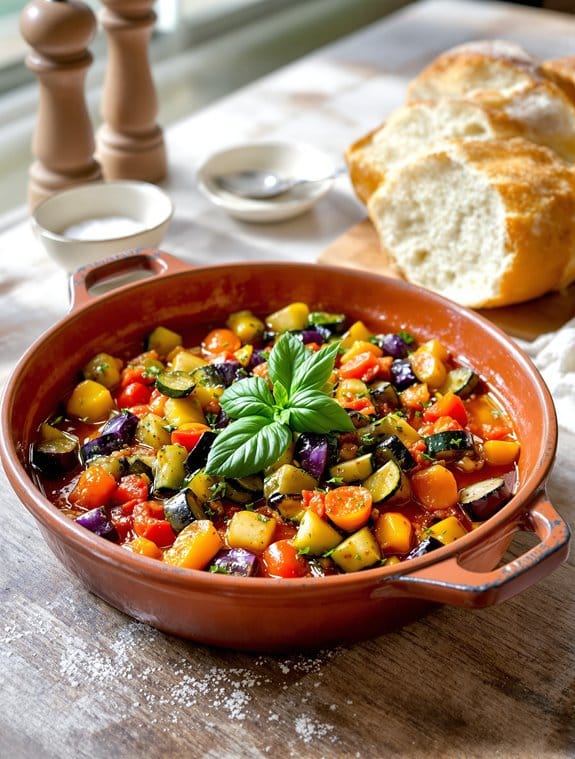
Rustic Ratatouille
Ingredients
Equipment
Method
- Heat a generous amount of olive oil in a Dutch oven or large saucepan over medium heat.
- Add garlic and onion, cooking until tender and fragrant, about 3-5 minutes. The onions should become translucent but not browned.
- Add the eggplant, zucchini, and green peppers along with the dried oregano, basil, and parsley. Stir well to coat everything with oil and herbs.
- Sauté the vegetables for about 5 minutes, just until they begin to soften while maintaining their shape.
- Pour in the crushed tomatoes and season with salt and freshly ground pepper to taste.
- Cover the pot, reduce heat to low, and simmer gently for about 45 minutes. Check occasionally to ensure nothing sticks to the bottom of the pot.
- Serve hot, at room temperature, or chilled after refrigerating overnight for enhanced flavor.

